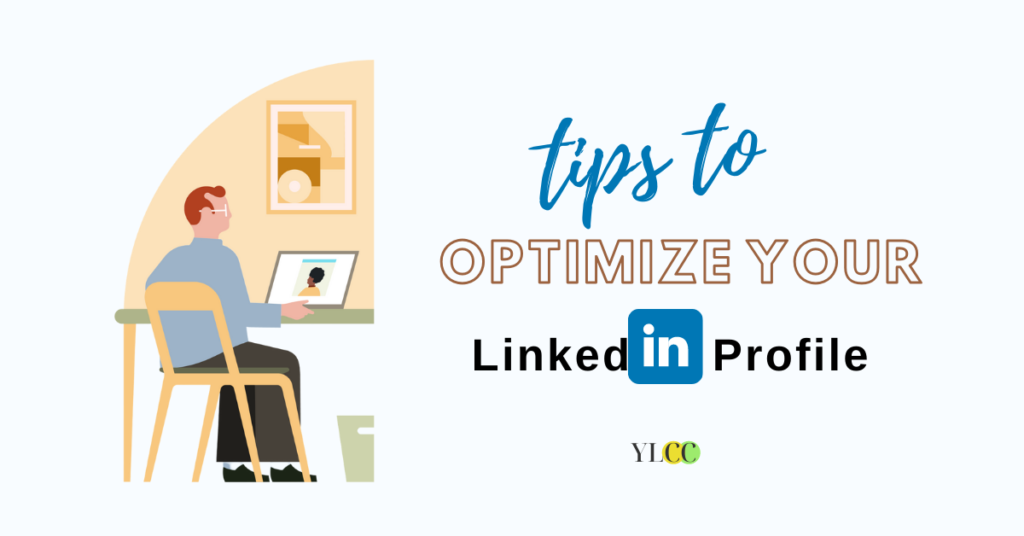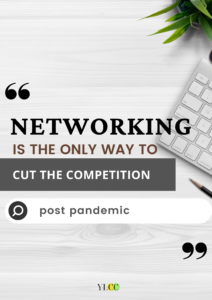
Regardless of whether you are a student or a professional, the best way to open yourself up to career opportunities is through professional networking. Consistent networking can help you come across potential clients or employers, keep you one-step ahead in an extremely competitive job market, and get better access to vital career resources.
One of the most effective ways of building your connections is through LinkedIn, the world’s largest and most renowned professional networking site to date. The LinkedIn profile you create is meant to enhance your personal brand, similar to how a resume does – yet, different as well. Think of your profile as a more dynamic and less formal version of your resume. This is where you can include a personal headshot, your hobbies, awards, casual summary of yourself – all things which shouldn’t show up on your traditional resume.
Why is a LinkedIn profile important for students and professionals?
- It is massively popular
Popularity is usually never an authentic parameter to judge something but in case of LinkedIn, the statistics speak for themselves. LinkedIn currently hosts over 756 million members across 200 countries, along with 55 million registered companies. In India too, it is very common for professionals to have a LinkedIn account- in fact, not having one could be considered an oddity. Employers and recruiters often also assume that candidates have a LinkedIn account, and a contrary scenario may affect your application.
- It builds trust and credibility
Having a solid LinkedIn profile undoubtedly boosts your credibility as a potential employee. It validates that you are a real person with real skills, and pushes the recruiter to give you a serious consideration.
- Job Recruiters and Managers are on LinkedIn
A large number of job recruiters and managers, especially Human Resource (HR) officials are on LinkedIn, and always on the lookout for new talent. The Jobvite Recruiter Nation Report 2016 (the Annual Social Recruiting Survey) found that a significant 87% recruiters find LinkedIn to be the most effective when vetting candidates during the hiring process. Having an active and well put together LinkedIn profile is, therefore, likely to significantly increase the chances of your discovery by various companies looking to hire people based on your skills and experience.
- It adds to personal branding
With LinkedIn, there is a whole new paradigm to achieve for your personal branding goals. LinkedIn allows one to add a lot of additional information that would usually not be fit to include in a CV or Resume. At the same time, many employers tend to appreciate the information as it helps them to make a better decision.
In this article, Team YLCC attempts to guide you on how to optimize your LinkedIn profile to achieve great results. Read on!
- Nailing The Profile Photo
Your profile picture is a key element of your LinkedIn presence. Research shows that just having a picture makes your profile 14 times more likely to be viewed by others.
However just having a picture shall not suffice- it should fit the bill.
Keep your casual, hangout and vacation pictures aside for Facebook or Instagram- LinkedIn demands something more formal!
The ideal display photo is usually a headshot taken by a professional photographer, preferably in a formal attire.
Here are some additional tips-
- Choose a photo that looks like you- avoid any ambiguity
- Use a high-resolution image- cheap or blurry photos are a strict no-no
- Make sure your face takes up at least 60% of the frame
- Arrange for a neutral background- random backgrounds are messy and distracting
- Suitable lighting is soft and natural
Avoid shiny foreheads, and choose clothing and background colors that match your personality and target roles. Above all, make viewers want to meet you (virtually or otherwise). Make sure you put your best foot (or face) forward!

- Create a catchy headline
A LinkedIn headline is like an article heading that entices the audience to read it. It is a unique opportunity that lets you announce yourself to your profile visitors within 120 characters. The profile photo along with the headline helps you stand apart from millions of other profiles and attract the right kind of audience for you. It convinces people to visit your profile to know more about you – so, in a way, it is a ‘Call to Action,’ which, when done correctly, can reap reliable results.
Here are some tips to choose an ideal headline:
- Keep it simple- a complicated headline will confuse your readers and discourage them to click on your profile.
- Be clear, compelling and specific- use keywords related to your profession
- Keep your headline dynamic- change it from time to time according to the situation
- Present yourself in a positive light- over-modesty will kill your chances of a great first impression
- Customize a unique cover photo
Okay, so now you have attracted vistors to your profile. Similar to Facebook, LinkedIn too offers space at the top of your profile for a cover photo (also called a ‘banner photo’). This is a major highlight that needs to be addressed with caution. According to LinkedIn official career expert Nicole Williams, ‘It helps potential clients, investors, and hiring managers see you in the professional light you’d like them to.’
Again, unlike that in Facebook and Twitter, one must ensure that the best possible use is being made of the space meant for the cover photo through unique designs and graphics.
Here are some tips for a unique banner:
- Do not be afraid to experiment- change your photo and use different styles to determine what works best for you.
- Link it with your profession- the cover photo should have some connection with your field of work
- Have a personal connection- banners can also be used to further your personal branding, so highlight yourself!
- Drafting an inclusive summary
A strong, compelling and optimised LinkedIn summary is a vital tool for jobseekers, both when applying for jobs traditionally and when networking on LinkedIn. The summary is arguably as important as the headline. Your LinkedIn summary is your chance to illustrate your unique value proposition, showing potential employers what you can bring to the table and what makes you the best person for the role.
The summary basically encapsulates your entire and CV and more, so drafting an effective summary can be fairly tricky. Here are some boxes you can check while drafting one:
- An Introduction– First introduce yourself, do not jump into your achievements right away. (LinkedIn’s latest update also allows you to upload a vocal personal introduction which can be accessed through a button beside the display photo!)
- Authenticity– Draft your summary in a way to convey a sense of uniqueness- avoid generic phrases!
- Achievements– This is the highlight of your summary. Make sure to not include excessive information- only mention your greatest wins!
- Skills and Roadmap– Painting a visual roadmap of your career journey in the summary is greatly effective.
- Numbers And Data– Including statistics can make your pitch more convincing, but remember to double check your data!
- Call To Action– Let visitors know how they can reach you (or redirect visitors to a website).
- Include detailed professional information
Resembling a real CV, the primary section of your LinkedIn profile will display specifics such as your educational qualifications, previous work experiences and other details such as your courses and certifications. If you are a student, you may also include your internships under Work experiences/designations. Be detailed in your approach, for example, make sure you include your tenure and start and end date for each work experience- as well as the kind of work you did in that role or organization.
- Provide accurate contact details
Apart from providing for the Direct Messaging option, LinkedIn allows you to provide a number of contact details on your profile such a phone number, an email address, a website, and a residential address. Make sure you enlist accurate details so that anyone can conveniently reach out to you, especially if it is urgent.
Sometimes, individuals may refrain from providing their phone numbers citing privacy concerns, which is legitimate. In this case, the next best option is a functional email address or direct messaging through the application itself.
- Highlight who you are
Besides the primary information, LinkedIn has different sections for a variety of other information such as the languages you know, volunteer work, honours and awards you have received, the causes you care for and more.
Filling all this information gives visitors a better idea of who you are as a person, and increases your chances of leaving a lasting impression. It also conveys that you have invested serious time and effort into improving your LinkedIn profile.
- Get recommendations
LinkedIn recommendations are essentially a form of employment references. They let people know that other professionals valued your contributions, witnessed an accomplishment, or are willing to put their name behind yours. Recommendations can significantly boost your profile. It lets hiring managers learn a bit about what you bring to the table from those who have worked with you, and that is incredibly valuable to them.
Every once in a while, one is likely to receive recommendations organically. Another popular practice is to write a recommendation for a known individual in your connections and ask them to do the same. However this is not necessarily a reciprocal practice- so do not harbor any expectations! Another alternative is to reach out to your co-workers, peers, past clients, mentors or superiors and ask them to write a recommendation- these are extremely valuable.
- Post Engaging Content
Creating and sharing content on LinkedIn is essential to get the most out of the platform. Every piece of quality content you share makes you more visible to hiring managers, recruiters, and industry leaders.
Content on LinkedIn has a number of forms, however long written posts are the most common. Content posted on LinkedIn should provide value to other users. Consider thinking of other LinkedIn users as subscribers, and try to provide content that is relevant to the audience you want to reach. Content posted on LinkedIn should provide value to other users. Consider thinking of other LinkedIn users as subscribers, and try to provide content that is relevant to the audience you want to reach. While good content earns you engagement and followers, poor content can affect your credibility.
- Customise your profile URL
When you open a LinkedIn profile for the first time, the link to your profile will be a random series of letter and alphabets. However, LinkedIn offers the option of customizing your profile URL to match your name or brand identity. Doing this can give a professional touch to your profile.
- Proofread the whole profile
Consider your LinkedIn profile as your virtual CV. Just like any mistakes in an actual CV would reflect terribly on your chances as a candidate, the same is applicable for your LinkedIn profile.
Proofreading is an essential step to weed out factually or grammatically incorrect information, or other inaccuracies. Proofreading also helps in rewriting something in a more effective way.
- Use the platform regularly
Last but not the least, it is crucial to open LinkedIn regularly. This is where most professionals falter- LinkedIn is not to be used only when one is looking for a job, it is a networking platform! Experts agree on the promise that only a consistent approach on LinkedIn can produce leads or opportunities in the long run.
Even if you are not fond of posting content, make sure you are expanding your network and interacting with existing connections and their content. Building meaningful relationships on LinkedIn can be time-consuming but essential for personal growth and career prospects. Do not let your profile collect dust!
During the job application process, many companies don’t require you to send them a LinkedIn. There is no place on the submission form that asks for your LinkedIn address, and perhaps this is why some jobseekers downplay the value of a LinkedIn profile. However, it cannot be stressed enough just how big a role LinkedIn profiles play towards getting hired. Having it on the top of your resume can be the difference between having your application skipped and securing an interview. If you need help, there are LinkedIn resume writers that can make sure your profile is ready to be read by hiring managers.
To know more, check YLCC’s LinkedIn Optimisation Workshop HERE.
YLCC would like to thank Sourajit Bhattacharyya for his valuable inputs in this article.






